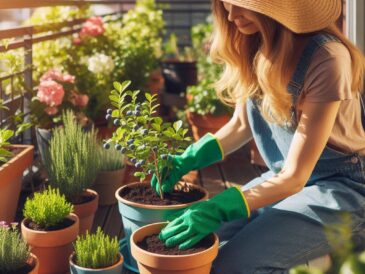Growing your own beets at home is not only rewarding but also ensures you have a fresh and plentiful supply of this nutritious root vegetable. Follow these 10 tips to achieve a bountiful beet crop and enjoy homegrown beets year-round.
1. Choose the Right Variety
Start by selecting beet varieties that suit your growing conditions. Some popular options include:
- Detroit Dark Red: Classic choice, great for beginners.
- Golden Beet: Yellow flesh, less earthy flavor.
- Chioggia: Striped beet with a sweet taste.
2. Prepare the Soil
Beets thrive in well-drained, loose soil. Ensure your soil is:
- Loamy and Sandy: This prevents compacting, allowing roots to grow easily.
- pH Level: Beets prefer slightly acidic to neutral soil (pH 6.0-7.0).
3. Plant at the Right Time
For the best results, plant beet seeds directly in the garden:
- Spring Planting: After the last frost when the soil temperature reaches 50°F.
- Fall Planting: 6-8 weeks before the first expected frost.
4. Sow Seeds Properly
Plant beet seeds 1 inch apart in rows spaced 12-18 inches apart. For a continuous harvest:
- Succession Planting: Sow seeds every 2-3 weeks.
5. Thin Seedlings
Once seedlings are 2-3 inches tall, thin them to about 3-4 inches apart. This prevents overcrowding and allows each beet to grow to its full potential.
6. Water Consistently
Keep the soil evenly moist throughout the growing season. Watering tips:
- Regular Watering: Ensure consistent moisture, especially during dry periods.
- Avoid Overwatering: Waterlogged soil can cause root rot.
7. Mulch to Retain Moisture
Apply a layer of mulch around your beet plants to help retain soil moisture and suppress weeds. Use organic materials like straw, leaves, or grass clippings.
8. Fertilize Appropriately
Beets don’t require heavy feeding but benefit from a balanced fertilizer:
- Pre-Planting: Mix compost or well-rotted manure into the soil.
- During Growth: Use a low-nitrogen fertilizer to promote root development.
9. Monitor for Pests and Diseases
Keep an eye out for common beet pests and diseases, such as:
- Leaf Miners: Look for serpentine trails on leaves.
- Fungal Diseases: Ensure good air circulation and avoid overhead watering.
10. Harvest at the Right Time
Beets are typically ready to harvest 50-70 days after planting. Harvest tips:
- Size Check: Pull beets when they are 1-3 inches in diameter for the best flavor.
- Staggered Harvest: Harvest beets as needed, leaving smaller ones to grow.
Bonus Tips
- Use Beet Greens: Don’t discard the tops! Beet greens are nutritious and can be used in salads, sautés, and soups.
- Storage: Store beets in a cool, dark place. They can be kept in the refrigerator for several weeks or in a root cellar for months.
By following these tips, you can ensure a bountiful beet crop that will keep you stocked with this versatile vegetable all year long. Enjoy the satisfaction of growing your own beets and the delicious, nutritious results!



